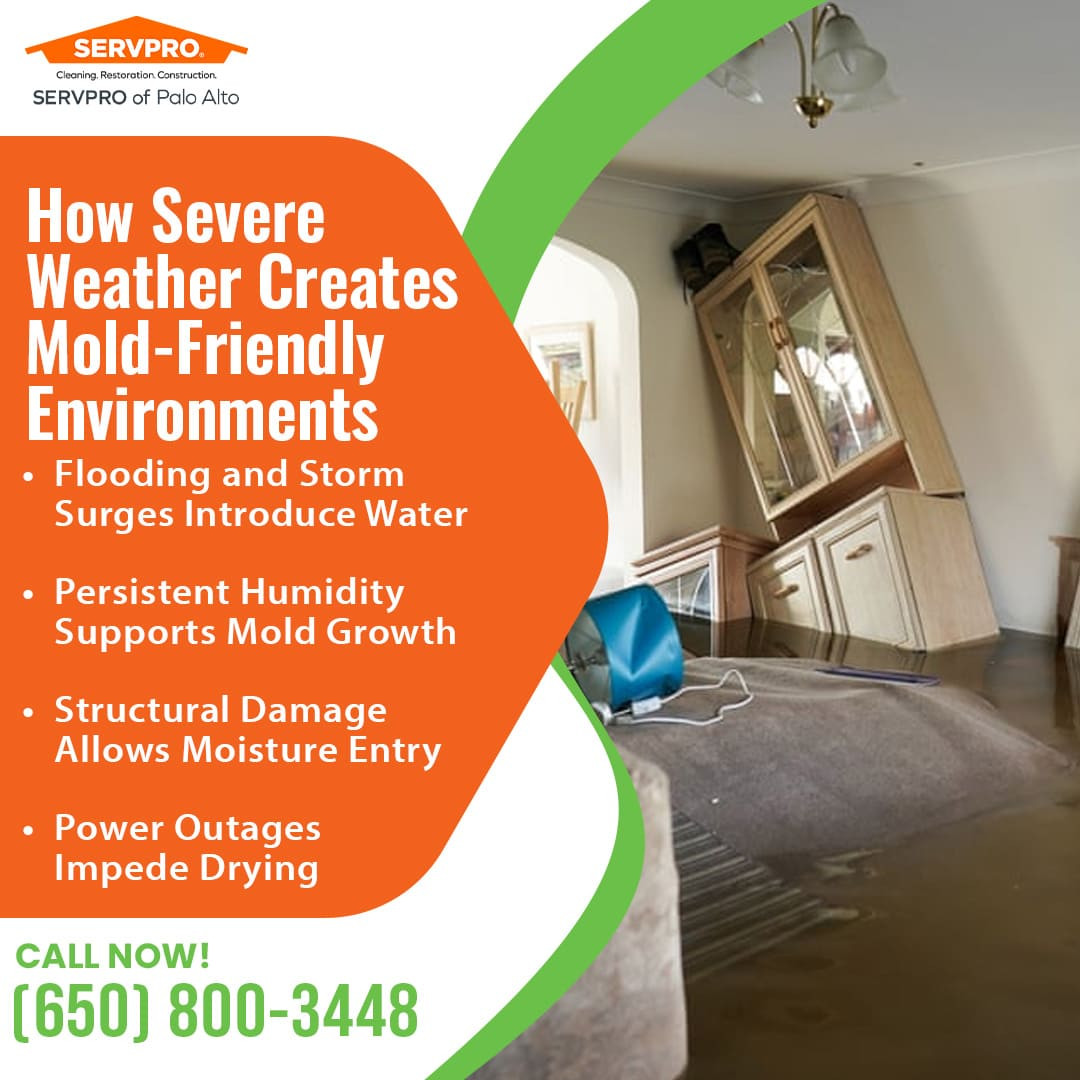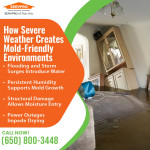Palo Alto, CA — Increasingly severe weather patterns across the United States are driving a rise in water intrusion incidents, especially in regions like the Bay Area, where atmospheric rivers and powerful storms are becoming more common. These events expose homes and commercial buildings to high moisture levels, creating the ideal conditions for mold growth within walls, ceilings, and other structural components. In communities such as Palo Alto, East Palo Alto, Atherton, and Stanford, this issue has become a critical concern for property owners who face the dual burden of property deterioration and costly repairs. Standard surface cleaning methods are often inadequate, as mold thrives in hidden, damp areas and can return quickly if underlying moisture problems are not fully resolved. The demand for certified mold remediation services has grown significantly, driven by the need to preserve building integrity, avoid long-term damage, and restore safe living and working environments following storm-related water exposure.

How severe weather creates mold-friendly environments
Flooding and storm surges introduce water
Major storms cause flooding through direct water entry and storm surges, saturating building materials and creating conditions for mold growth. Regions frequently affected by such events, like coastal areas and those impacted by atmospheric rivers, need effective water extraction, drying, and potential mold removal.
Persistent humidity supports mold growth
Even without direct flooding, post-storm high humidity saturates porous building materials like wood and drywall. Mold spores on these damp surfaces can grow into colonies within 24 to 48 hours, according to CDC guidelines. Prompt drying after water intrusion is crucial; delayed drying increases the need for mold remediation.
Structural damage allows moisture entry
Extreme weather can compromise building envelopes, including roofs, windows, siding, and foundations. These openings allow water and humidity to enter, causing hidden mold growth even after storms have passed. Sealing entry points is crucial to prevent mold from recurring after cleanup.
Power outages impede drying
Severe weather often causes power outages, which can disable air conditioning and dehumidifiers. This prevents proper humidity control and drying, leading to prolonged dampness and increased indoor moisture. Consequently, mold can establish and spread more easily, making future mold cleanup more complicated.
Recognizing mold problems after water events
Visible mold, such as spots or patches in different colors and textures, along with musty smells, peeling paint, or ongoing allergy symptoms, may indicate mold presence. Water stains and areas of dampness are also warning signs. Inspections using moisture meters and thermal cameras can help detect mold that is not easily seen and support effective mold removal processes.
Different approaches: Mold clean up, removal, and remediation
Simple mold clean-up, involving surface washing, is limited in effectiveness, especially on porous materials, as it doesn't address the root cause of moisture or airborne spores, which can lead to regrowth. Mold removal focuses on eliminating visible colonies but is insufficient without addressing the water source, containing the area, and assuring proper drying, which can help prevent recurrence. Professional mold remediation, following standards like IICRC S520, is a comprehensive, multi-step process that includes assessment, containment, air filtration, safe removal, cleaning, drying, and verification, offering the best long-term solution.
Practical considerations for homeowners
Factors affecting remediation costs
The expense associated with professional mold remediation can differ widely. The size of the contaminated area is a major factor, often priced per square foot. Mold's location also plays a role; infestations in attics, crawl spaces, or HVAC systems can be more complex and costly to handle than mold on easily accessible walls. The types of materials that need mold removal and any necessary structural repairs also affect the total cost.
Navigating insurance coverage
Homeowners' insurance coverage for mold remediation varies. Policies often cover mold damage resulting from a sudden, accidental water release, like a burst pipe, but may exclude mold caused by gradual leaks, high humidity, poor maintenance, or flooding. Flood damage itself typically requires a separate flood insurance policy, especially in designated flood zones. Property owners should review their insurance policy details carefully and discuss coverage specifics with their provider when facing mold issues after water damage.

Mold after severe weather
Changing US weather links water damage to indoor mold growth, impacting air quality and property structure. Professional mold remediation after significant water intrusion is more effective than simple mold cleanup. Property owners who suspect mold should seek certified professionals for assessment and remediation to protect the building and the safety of its occupants.
SERVPRO of Palo Alto
Locally owned SERVPRO of Palo Alto offers 24/7 restoration services for residential and commercial properties. Backed by national resources, our certified technicians expertly handle water, fire, storm, and mold damage in Palo Alto and surrounding communities. Responding quickly to any size disaster, we work with insurance companies to restore your property as soon as possible. For immediate assistance with property damage restoration or cleaning needs, contact SERVPRO of Palo Alto. Call (650) 800-3448 or email zkareem@servpropaloalto.com today.





